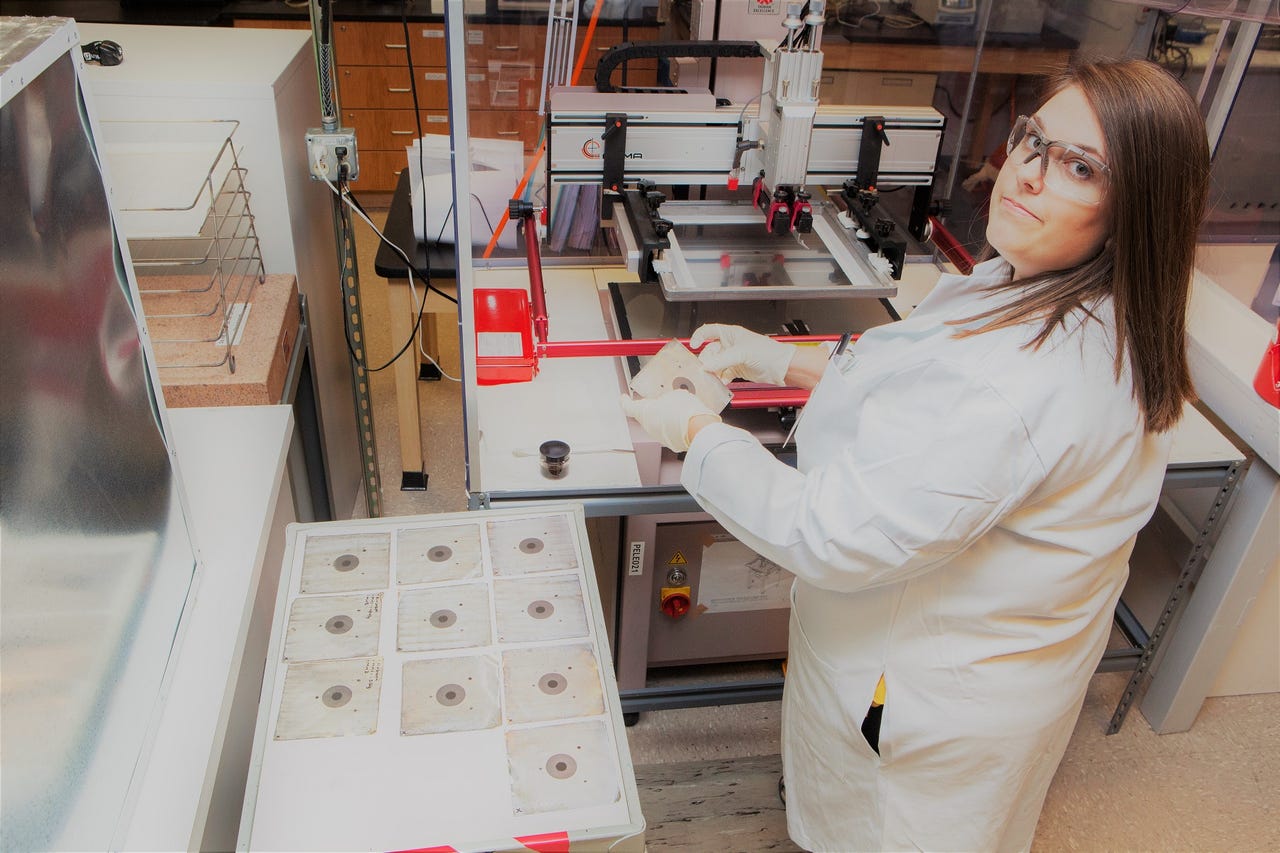UNSW, UQ behind Printed Energy's AU$12m project to advance screen-printed batteries


Printed Energy's manufacturing lab
The University of New South Wales (UNSW) and the University of Queensland (UQ) have come together to further the development of screen-printed batteries through Printed Energy's AU$12 million project aimed at bringing intermittent renewable energy to market.
The Brisbane-based company is developing ultra-thin, flexible screen-printed batteries for use in cheap portable devices, with UNSW's Dean of Engineering Mark Hoffman saying that storage has been the missing piece of the puzzle when it comes to renewable energy.
"The world is crying out for storage solutions, and this partnership has the potential to deliver on that urgent need," Hoffman said. "What's exciting is that this technology also has immediate applications in wearables and small-scale devices."
Printed Energy's solid state batteries are printed in a roll-to-roll process, like a newspaper that can be formed into almost any shape, giving it the potential to power everything, a joint statement from UQ and UNSW explained.
"The highly innovative and unique nature of this technology makes it ideal for powering sensors, devices for the Internet or Things, disposable healthcare devices, and eventually, even for large-scale application to help manage the intermittent nature of electricity generated by solar panels," Printed Energy CEO Rodger Whitby said.
The federal government on Monday announced it would be giving 13 projects a share of AU$28.8 million in a bid to assist businesses and research institutions working together on new technology solutions.
The funding is provided by the government under the third round of the Cooperative Research Centre Projects (CRC-P) initiative, aimed at supporting short-term industry-led "collaborations" to solve problems and deliver tangible outcomes for a range of industries such as energy, mining and resources, manufacturing, healthcare, agriculture, and transport.
Printed Energy was awarded AU$2 million for its work as part of the CRC-P program.
In addition to support from the universities and the federal government, Printed Energy is backed by Trevor St Baker, who founded ERM Power, an energy company that develops, owns, and operates power stations across Australia.
ERM Power has equity interests in 497 megawatts of low emission gas-fired peaking power generation assets comprising 100 percent of the 332 megawatt Oakey Power Station in Queensland and 50 percent of the 330 megawatt Neerabup Power Station in Western Australia, both of which it operates.
The power entrepreneur also launched the St Baker Energy Innovation Fund that he describes as being active investor in early stage companies that are developing "disruptive" products in the clean energy sector.
In addition to being the CEO of Printed Energy, Whitby is also the CEO of the St Baker Energy Innovation Fund.